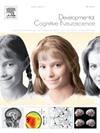The connecting brain in context: How adolescent plasticity supports learning and development
IF 4.9
2区 医学
Q1 NEUROSCIENCES
引用次数: 0
Abstract
Puberty initiates significant neurobiological changes that amplify adolescents’ responsiveness to their environment, facilitating neural adaptation through processes like synaptic pruning, myelination, and neuronal reorganization. This heightened neuroplasticity, combined with their burgeoning social curiosity and appetite for risk, propels adolescents to explore diverse new environments and forge social bonds. Such exploration can accelerate experiential learning and the formation of social networks as adolescents prepare for adult independence. This review examines the complex interplay between adolescent neuroplasticity, environmental influences, and learning processes, synthesizing findings from recent studies that illustrate how factors such as social interactions, school environments, and neighborhood contexts influence both the transient activation and enduring organization of the developing brain. We advocate for incorporating social interaction into adolescent-tailored interventions, leveraging their social plasticity to optimize learning and development during this critical phase. Going forward, we discuss the importance of longitudinal studies that employ multimodal approaches to characterize the dynamic interactions between development and environment, highlighting recent advancements in quantifying environmental impacts in studies of developmental neuroscience. Ultimately, this paper provides an updated synopsis of adolescent neuroplasticity and the environment, underscoring the potential for environmental enrichment programs to support healthy brain development and resilience at this critical development stage.
情境中的连接大脑:青少年可塑性如何支持学习和发展。
青春期启动了显著的神经生物学变化,增强了青少年对环境的反应,通过突触修剪、髓鞘形成和神经元重组等过程促进了神经适应。这种增强的神经可塑性,加上他们对社交的好奇心和冒险的欲望,促使青少年探索不同的新环境,建立社会纽带。这种探索可以加速体验式学习和社会网络的形成,因为青少年正在为成人独立做准备。这篇综述探讨了青少年神经可塑性、环境影响和学习过程之间复杂的相互作用,综合了最近的研究结果,说明了社会互动、学校环境和邻里环境等因素如何影响发育中的大脑的短暂激活和持久组织。我们提倡将社会互动纳入青少年量身定制的干预措施,利用他们的社会可塑性来优化这一关键阶段的学习和发展。展望未来,我们讨论了纵向研究的重要性,这些研究采用多模态方法来表征发展与环境之间的动态相互作用,重点介绍了在发育神经科学研究中量化环境影响的最新进展。最后,本文提供了青少年神经可塑性和环境的最新概述,强调了环境丰富计划在这一关键发育阶段支持健康大脑发育和恢复能力的潜力。
本文章由计算机程序翻译,如有差异,请以英文原文为准。
求助全文
约1分钟内获得全文
求助全文
来源期刊

Developmental Cognitive Neuroscience
NEUROSCIENCES-
CiteScore
7.60
自引率
10.60%
发文量
124
审稿时长
6-12 weeks
期刊介绍:
The journal publishes theoretical and research papers on cognitive brain development, from infancy through childhood and adolescence and into adulthood. It covers neurocognitive development and neurocognitive processing in both typical and atypical development, including social and affective aspects. Appropriate methodologies for the journal include, but are not limited to, functional neuroimaging (fMRI and MEG), electrophysiology (EEG and ERP), NIRS and transcranial magnetic stimulation, as well as other basic neuroscience approaches using cellular and animal models that directly address cognitive brain development, patient studies, case studies, post-mortem studies and pharmacological studies.
 求助内容:
求助内容: 应助结果提醒方式:
应助结果提醒方式:


